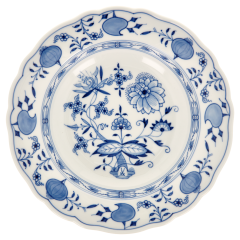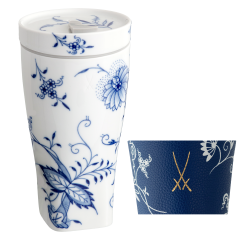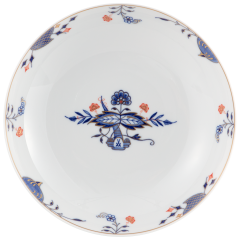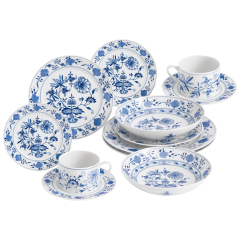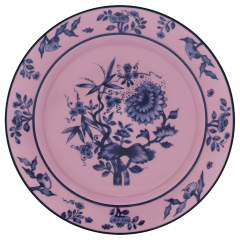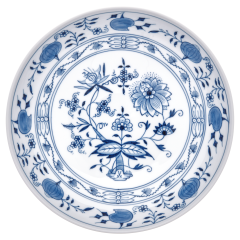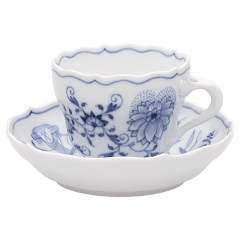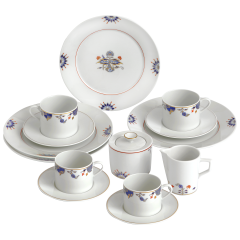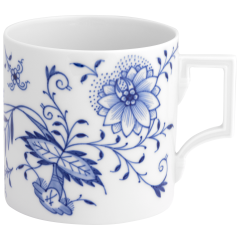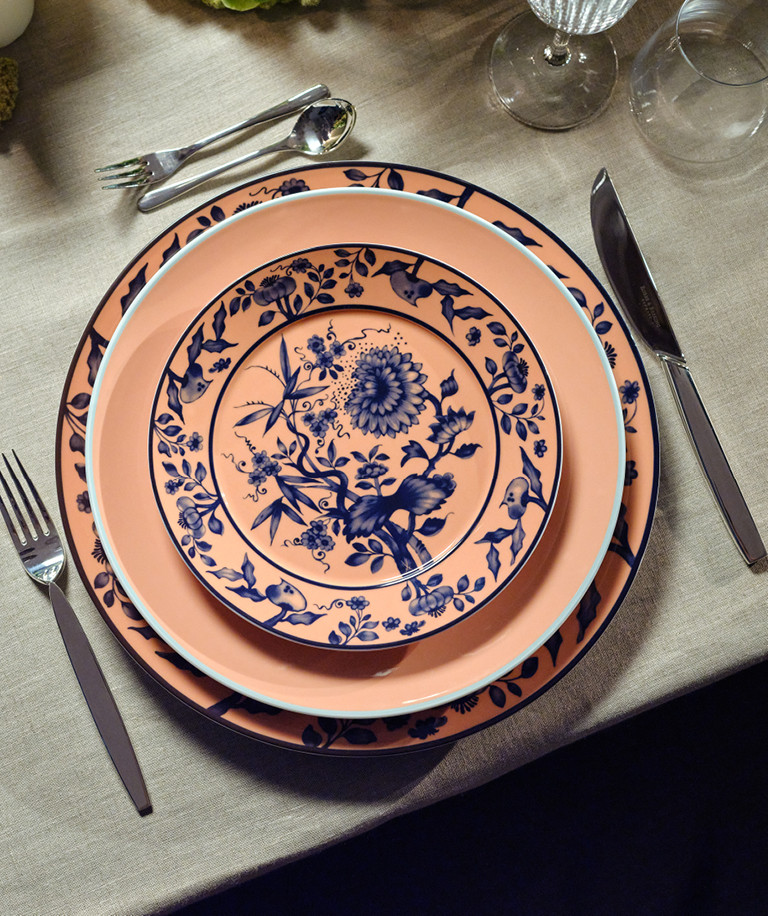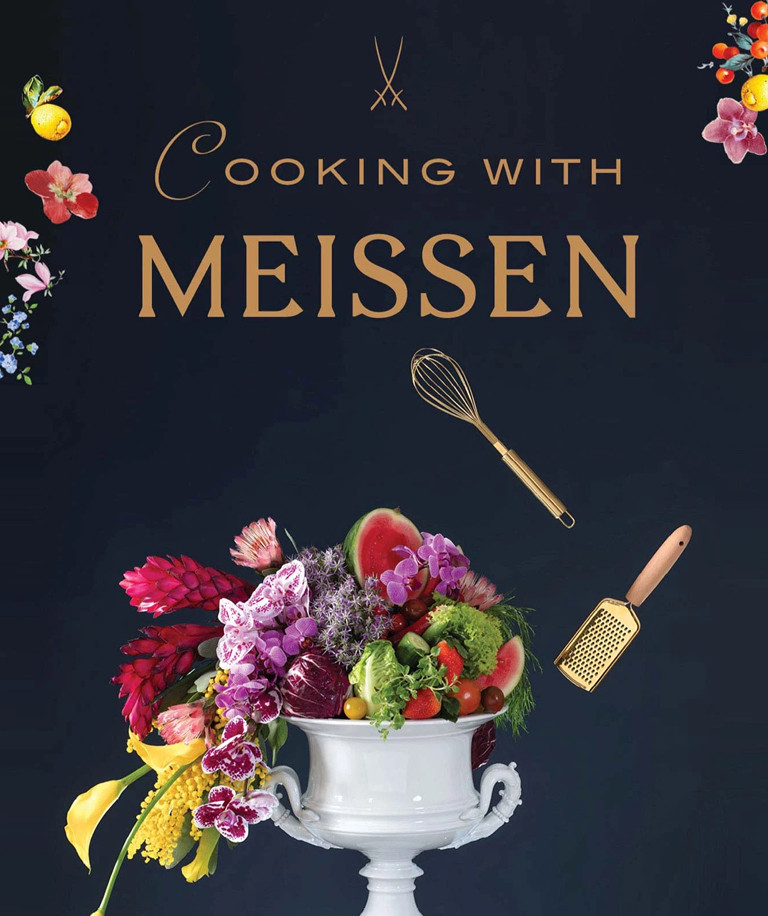Christmas Offer from MEISSEN – Enjoy Exclusive Savings! Learn More.
Skip to Content
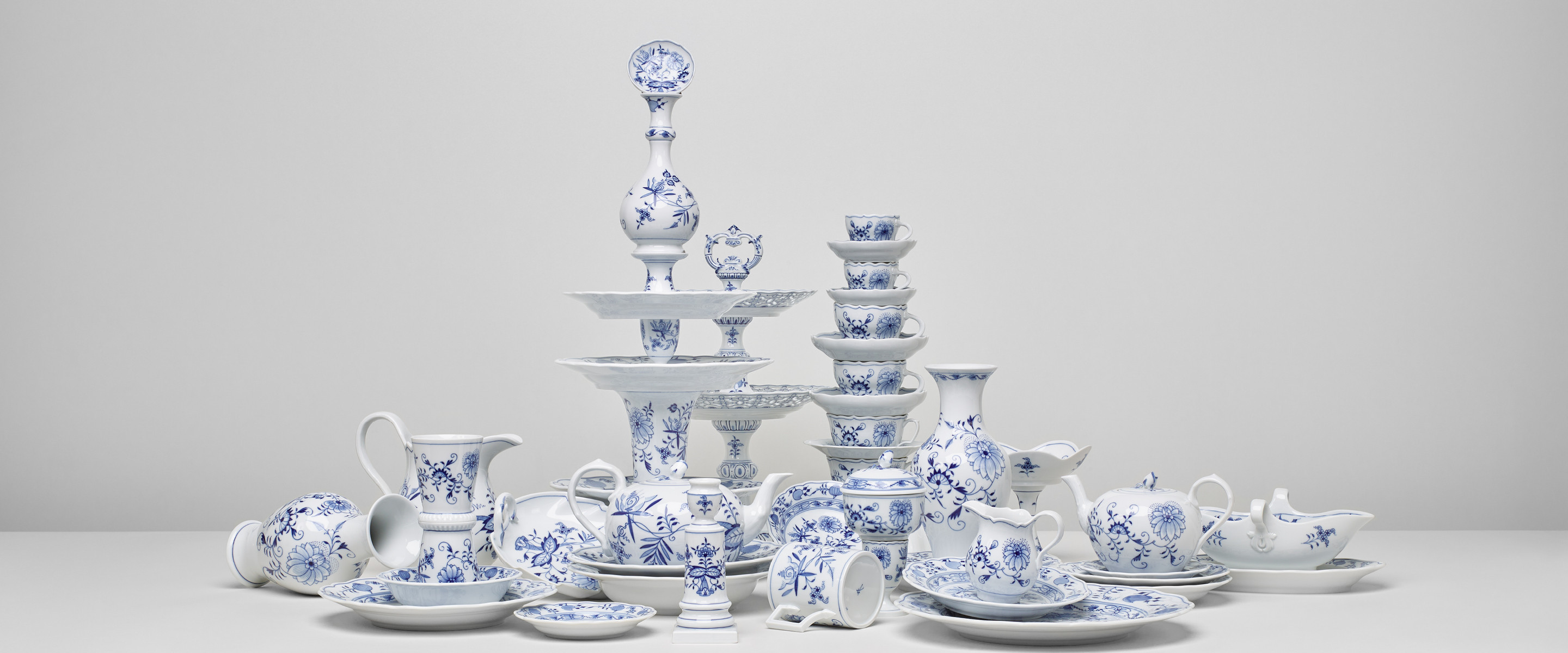
The story of an icon: the blue onion
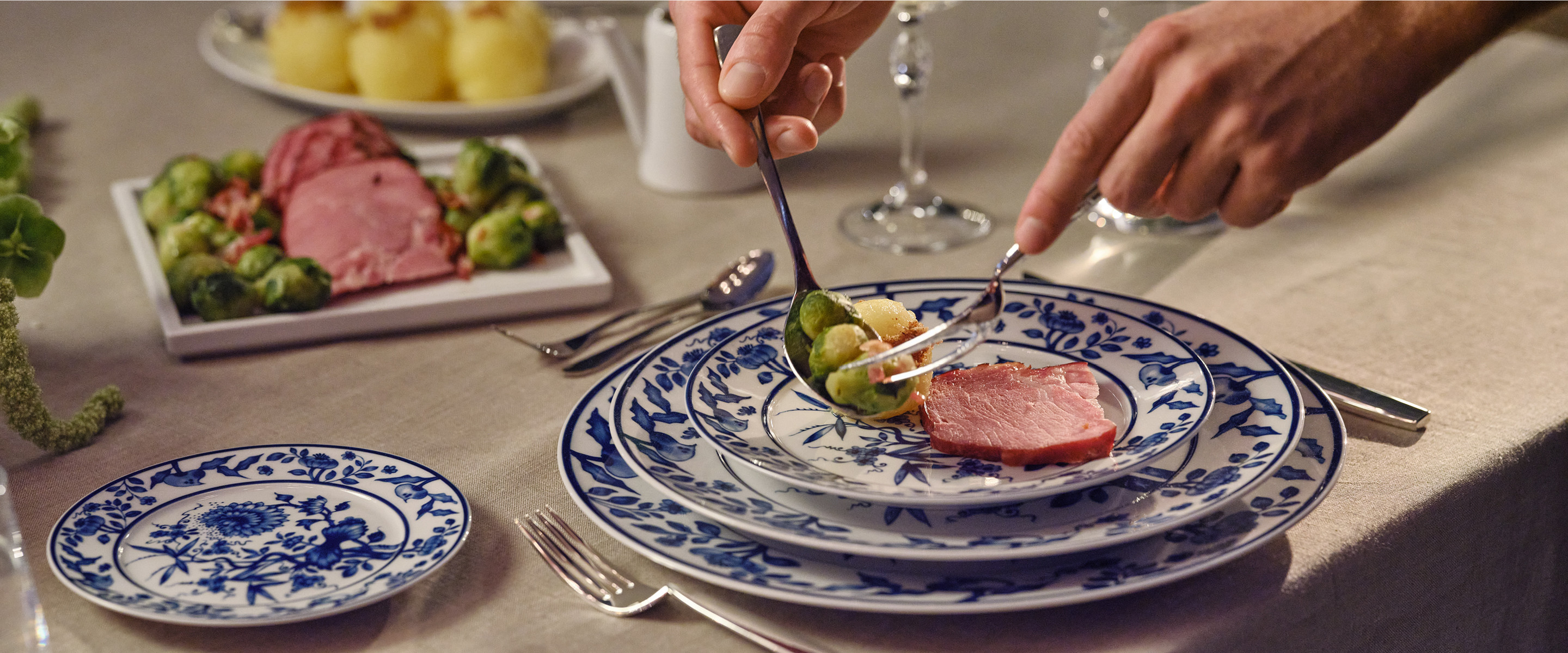

The story of an icon: the blue onion
#MEISSENhistory
-
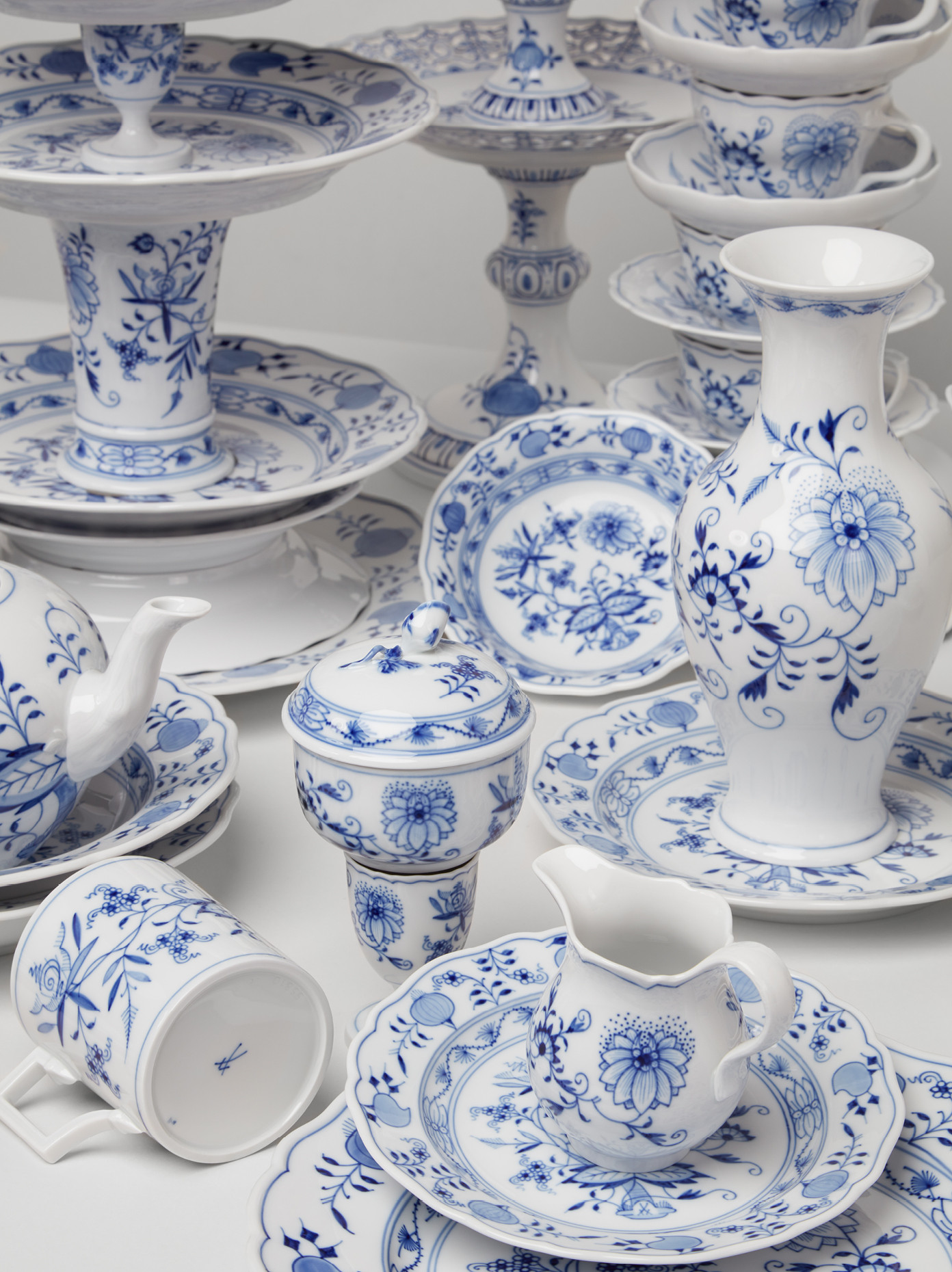 It is one of the most famous and iconic blue patterns in the world. The blue onion pattern, which found its home on MEISSEN porcelain, has its roots not in Europe, but in China. In the 17th century, at a time when long-distance trade was flourishing, Chinese porcelain, which was considered a real treasure at the time, reached European traders for the first time. These valuable pieces, often decorated with blue designs on white porcelain, aroused enthusiasm in Europe, which stimulated trade and ultimately led to the desire to produce their own porcelain.
It is one of the most famous and iconic blue patterns in the world. The blue onion pattern, which found its home on MEISSEN porcelain, has its roots not in Europe, but in China. In the 17th century, at a time when long-distance trade was flourishing, Chinese porcelain, which was considered a real treasure at the time, reached European traders for the first time. These valuable pieces, often decorated with blue designs on white porcelain, aroused enthusiasm in Europe, which stimulated trade and ultimately led to the desire to produce their own porcelain.
European porcelain was born in 1710 with the founding of the MEISSEN Porcelain Manufactory by Augustus the Strong, Elector of Saxony. The manufactory was the first in Europe to unlock the secret of porcelain production. Just a few years after it was founded, the blue onion pattern was developed in Meissen (around 1739). In contrast to its Far Eastern models, however, the MEISSEN blue onion was not an exact copy. Rather, it was a stylized, Europeanized version of the Chinese decorations. The name “blue onion” is misleading, as the original motifs did not depict onions, but peaches, melons and bamboo plants, which looked like onions to European eyes. The patterns were classically executed in cobalt blue underglaze painting, which is still considered a characteristic feature of this decoration today.
“Today, in the 21st century, the onion pattern has lost none of its fascination. It continues to stand for timeless elegance and uniqueness.”
-
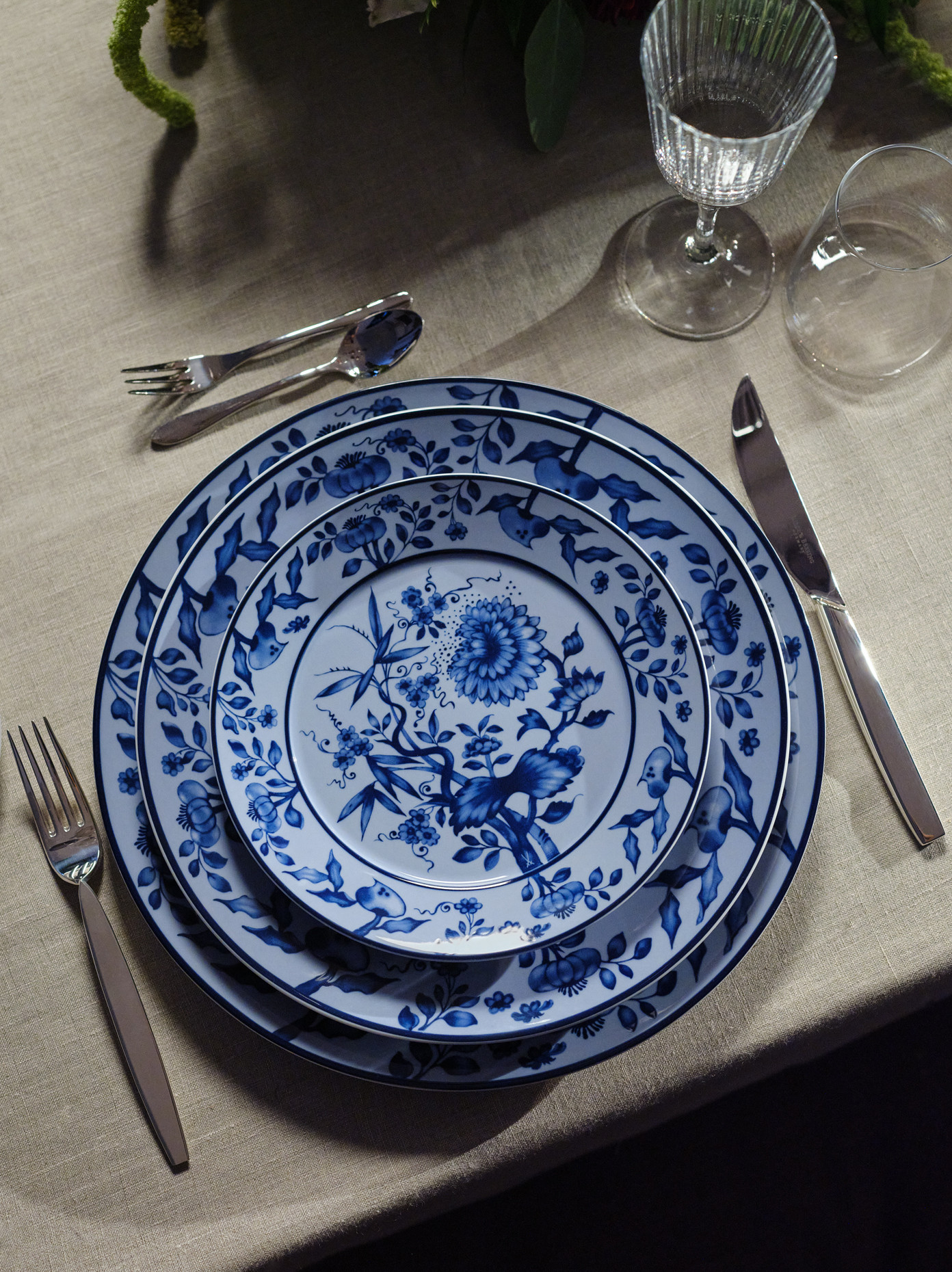 Over the centuries, the blue onion pattern has undergone numerous stylistic and technical variations due to both changes in taste and technological advances in porcelain production. The original blue onion was painted in cobalt blue on white porcelain, whereby this color scheme is considered the “true” form of the blue onion and is still extremely popular today. However, different color variations began to be produced as early as the 19th century. These ranged from a delicate green to red, brown and black. Particularly during the Art Nouveau and Art Deco periods, more and more colorful variations of the pattern were designed to meet the tastes of the time. However, the blue onion pattern remained the most popular and influential even during these periods. The most important milestones of our time in the evolution of the famous pattern are probably the blue onion style created in 2004 and the Noble Blue created in 2017.
Over the centuries, the blue onion pattern has undergone numerous stylistic and technical variations due to both changes in taste and technological advances in porcelain production. The original blue onion was painted in cobalt blue on white porcelain, whereby this color scheme is considered the “true” form of the blue onion and is still extremely popular today. However, different color variations began to be produced as early as the 19th century. These ranged from a delicate green to red, brown and black. Particularly during the Art Nouveau and Art Deco periods, more and more colorful variations of the pattern were designed to meet the tastes of the time. However, the blue onion pattern remained the most popular and influential even during these periods. The most important milestones of our time in the evolution of the famous pattern are probably the blue onion style created in 2004 and the Noble Blue created in 2017.
Today, in the 21st century, the blue onion pattern has lost none of its fascination. It continues to stand for timeless elegance and is appreciated in both traditional and modern contexts. MEISSEN has succeeded in adapting the blue onion to new trends without losing the original charm of the pattern. The latest development of this unique icon is “The Original”. The basis for “The Original” is a variant of the blue onion from the years between 1733 and 1735. The Crossed Swords in the bamboo stem were added to the original pattern, which clearly distinguishes the MEISSEN original from possible imitators. The pattern was applied to different colors, which also form the basis for the new MEISSEN “The Original Uni” collection. With the colorful decorations consisting of celadon, yellow, red, pink, blue and petrol, “The Original” is a unique dinner service that is second to none and leads the evolution of the decor into a new era.







